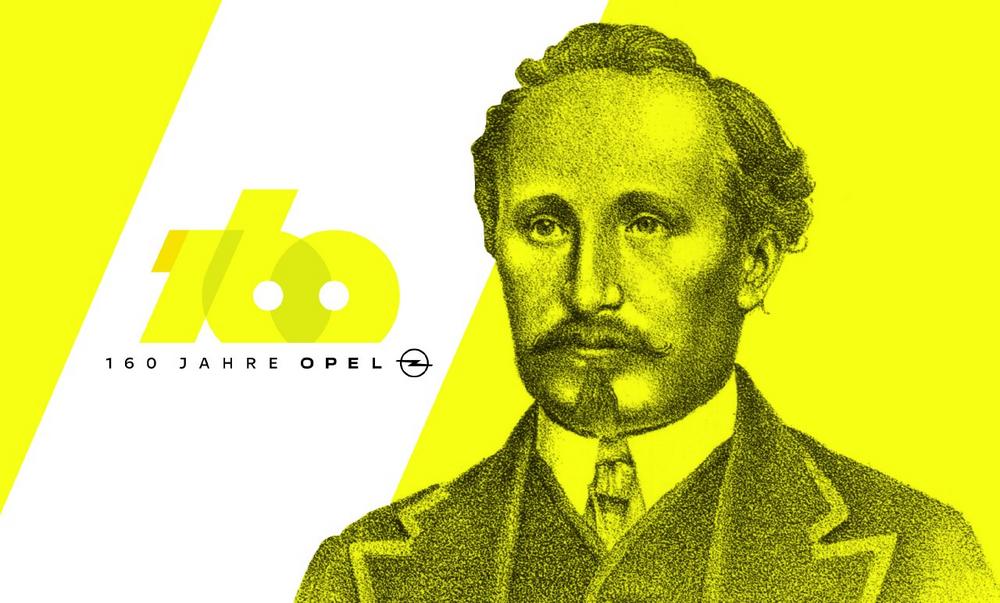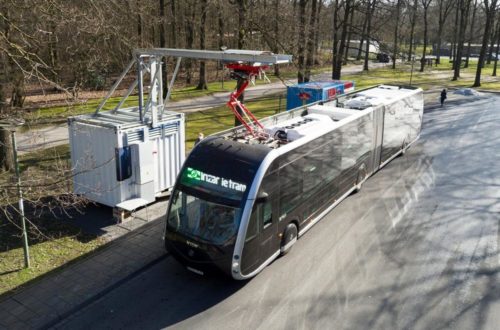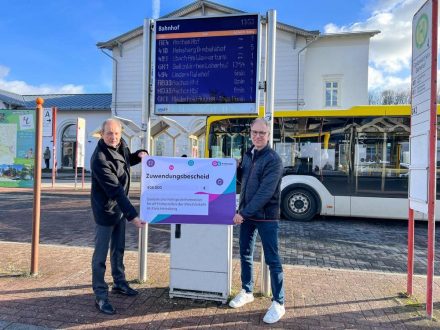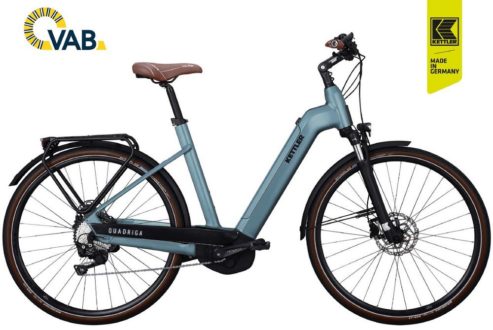
Olympic Level Innovations: Even More Hidden Treasures from 160 Years of Opel History
- Clever modern living ideas: Lightweight chairs and cool bestsellers
- Fast, faster, Opel: The Rüsselsheim ”Blitz” in the ice channel and top-tier racing
- Practitioners by heart: Useful trailers and lovely mini marine predators
160 years of Opel mean countless automotive legends as well as bestsellers like the Opel Corsa or the new Opel Astra. However, 160 years of Opel also hold many surprises beyond automobile production. Innovations and solutions that made everyday life easier and caused quite a stir in their time, but are sometimes overlooked today. These include the development of sophisticated machines for agriculture as well as engines for two-wheelers and aeroplanes. The second part of the "hidden treasures from the Opel archive" reveals more amazing ideas and products "made in Rüsselsheim" that very few would have expected. Some of them have even achieved cult status! The secret behind their success: as in automotive engineering, Opel always focuses on innovative solutions that are suitable for everyday use and are developed with great attention to detail.
Nature as a role model: The art of light construction
Opel as an innovative "home fitter"? That would be quite possible, but to understand the background, you first need to look across the Atlantic: the Museum of Modern Art (MoMA) in New York is home to one of the world’s most important collections of contemporary art. And the “Bone Chair” has been part of this collection since 2008. It was designed by the Dutch artist Joris Laarman – based on data from the Rüsselsheim engineering center. The aluminium chair was presented in the special exhibition “Design and the Elastic Mind” together with an engine holder from an Opel Vectra. Like the “Bone Chair”, the motor holder was designed according to biological construction principles. Bionics is the name of the scientific discipline that systematically analyses construction and growth principles from nature and applies them to technical developments in the automobile industry. The goal: to reduce the weight of components and at the same time increase their strength – a lightweight design modelled on nature. Engineers from Rüsselsheim have developed a simulation programme that transfers the natural growth rules of trees, for example, to component developments. The result: components such as the engine holder are a quarter lighter and at the same time 60 percent stronger.
A must in every kitchen: The cool bestseller
What is now part of the basic equipment of every kitchen was by no means a matter of course in the past: the refrigerator is the dream of many German housewives in the 1950s. One of the most coveted models is the “Frigidaire” – and this brand has a common history with Opel. Thousands of refrigerators were manufactured in Rüsselsheim. How did that happen? Frigidaire had been building refrigerators since 1916, and in 1918 the company was bought by General Motors. From the mid-1920s, business boomed, with demand soaring worldwide. And so the GM subsidiary Frigidaire also expanded into Germany. In 1926, Frigidaire GmbH was founded in Berlin, and from 1931 Opel supplied components from Rüsselsheim for the Berlin assembly line. On October 1, 1938, the Rüsselsheim main plant finally took over complete assembly. From 1949, the refrigerators produced in Hesse carry the words “Product of Adam Opel AG” in their logo. After a design relaunch in 1954, the brand even advanced to become the market leader in West Germany. From the mid-1950s, however, Opel wanted to concentrate on booming automobile production – and so the decision was made to discontinue Frigidaire production in 1959. Frigidaire still exists today, but the brand now belongs to a Swedish company.
Way ahead of its time: The Olympic bobsleigh
Not only did Opel venture into "icy fields" with the production of refrigerators, but also in a sport that today captivates many fans every winter. Under the project name “LP 13”, engineers from Rüsselsheim constructed a bobsleigh especially for the 1980 Winter Olympics in Lake Placid, USA. Curiously, however, it was not used there. The story begins as early as 1977: Opel designers were commissioned to provide the bobsleighs of the Deutscher Bob- und Schlittenverband (DBSV), the German Bobsleigh and Sledge Association, with special paintwork. The Rüsselsheim-based company came up with the idea of not just doing cosmetics, but of completely redesigning the sports equipment – and the association agrees! Under Opel’s direction, an innovative shape is worked out in the wind tunnel and a completely new steering system is developed. In addition, the skids will be equipped with springs and damping. First tests show: the four-man and two-man bobsleighs are 0.65 and 1.35 seconds faster per run, respectively, than the previous models – in top-level sport these are worlds apart. But to ensure equal competition, the federation only allows athletes to compete in the old conventional bobsleighs during qualification. And that means: the qualified teams first have to familiarise themselves with the futuristic Opel bobsleigh. But there is not enough time for that. Above all, the drivers cannot master the innovative steering perfectly in the short term. The risk is too high, the DBSV withdraws the Opel bobs. “These machines were well ahead of their time – actually too much so,” recalls bobsleigh legend and Opel fan André Lange. It is undisputed that the Opel bob has nevertheless had a lasting influence on the design of sports equipment right up to the present day.
Performance booster for the racing stars: Formula 1 foundations thanks to Opel
Opel provided exceptional speed not only on the ice channel, but also on the race track. In 1990, Michael Schumacher won his first title in the German Formula 3 Championship. In the rear of his Reynard 903: the legendary Opel two-litre 16V engine. Opel was not only a sought-after engine supplier in Formula 3 from 1990 onwards – the 2.0-16V power unit from Rüsselsheim advanced to become the most successful racing engine ever. Many later Formula 1 stars learned the refinements of Formula 1 racing with Opel power behind them: Rubens Barrichello, David Coulthard, Giancarlo Fisichella, Heinz-Harald Frentzen, Mika Häkkinen, Nick Heidfeld and Ralf Schumacher. Opel took 164 Formula 3 victories in Germany alone and a further 30 national championship titles around the globe. Jos Verstappen (1993), Jarno Trulli (1996) and Nick Heidfeld (1997) won German Formula 3 championships with Opel engines. And today? The brand with the lightning bolt is leading racing and rallying into the future – with the ADAC Opel e-Rally Cup as the first electric rally one-make cup worldwide and the matching battery-electric, locally emission-free Opel Corsa-e Rally.
When more equipment is needed: Useful trailers from Opel
With modern racing and rally vehicles, Opel inspires in sports – with all-round practical solutions for all requirements the tradition-rich brand convinces in everyday life. One example from the 1980s is the practical Opel car trailer made of aluminium for business, small transport, leisure and holidays that once was advertised as a “Leichtmetaller” (light metal). In the accompanying brochure from 1981, six trailer versions were offered in four sizes each, making a proud 24 variants. The largest version was 2.20 metres long and had a payload of one tonne. Unfortunately, the single-axle trucks did not bear a Blitz emblem (lightning bolt), for example on the tailboard. If they did, the few remaining examples would certainly be highly sought-after collector’s items. In 1913, Opel already had a trailer in its range. However, this was a two-tonne two-axle trailer with drawbar, which was intended for trucks.
Join the hunt: Hidden sharks are cult in Opel models
Back to the present – and to the Opel designers’ love of detail and thoroughly unconventional ideas. The hidden shark in Opel models has become more than a lovely tradition – it is a cult object! In 2006, the animal appeared for the first time in the Corsa. How did it end up there? Opel designer Dietmar Finger drew a few sketches of the outer panel of the Corsa’s glove box at home. His son looked over his shoulder and asked, “Dad, why don’t you just draw a shark?” So he drew a tiny predatory fish, showed the design to his superiors and colleagues – and they were thrilled. From then on, the shark spread to all new Opel models. At the end of the development and design process, the head interior designer is allowed to place it in the interior – without revealing where. And so the idea has now become a popular “Easter Egg”: a hidden detail that delights customers when they take delivery of their new Opel and go looking for it. And in the latest models, such as the new Opel Astra Sports Tourer, several of the small predators are making their rounds – in places where you definitely wouldn’t expect them …
Opel Automobile GmbH
Bahnhofsplatz 1
65423 Rüsselsheim
Telefon: +49 (6142) 7-70
Telefax: +49 (6142) 77-8409
http://de-media.opel.com/de
Telefon: +49 (6142) 6927466
E-Mail: leif.rohwedder@opel-vauxhall.com
![]()




